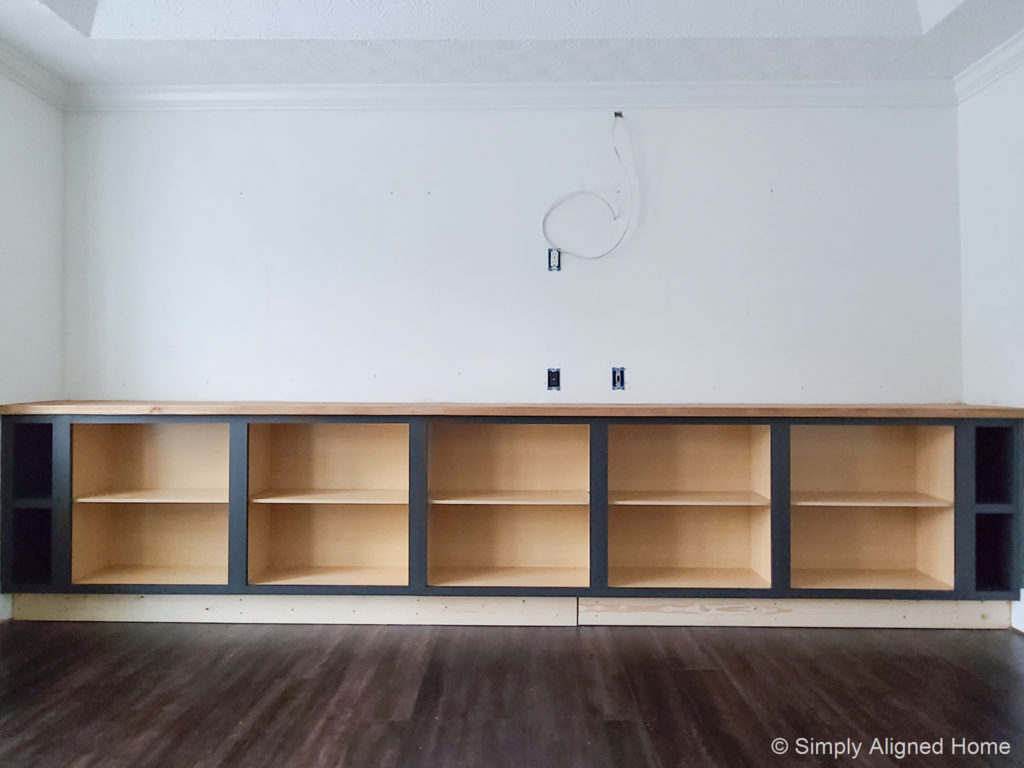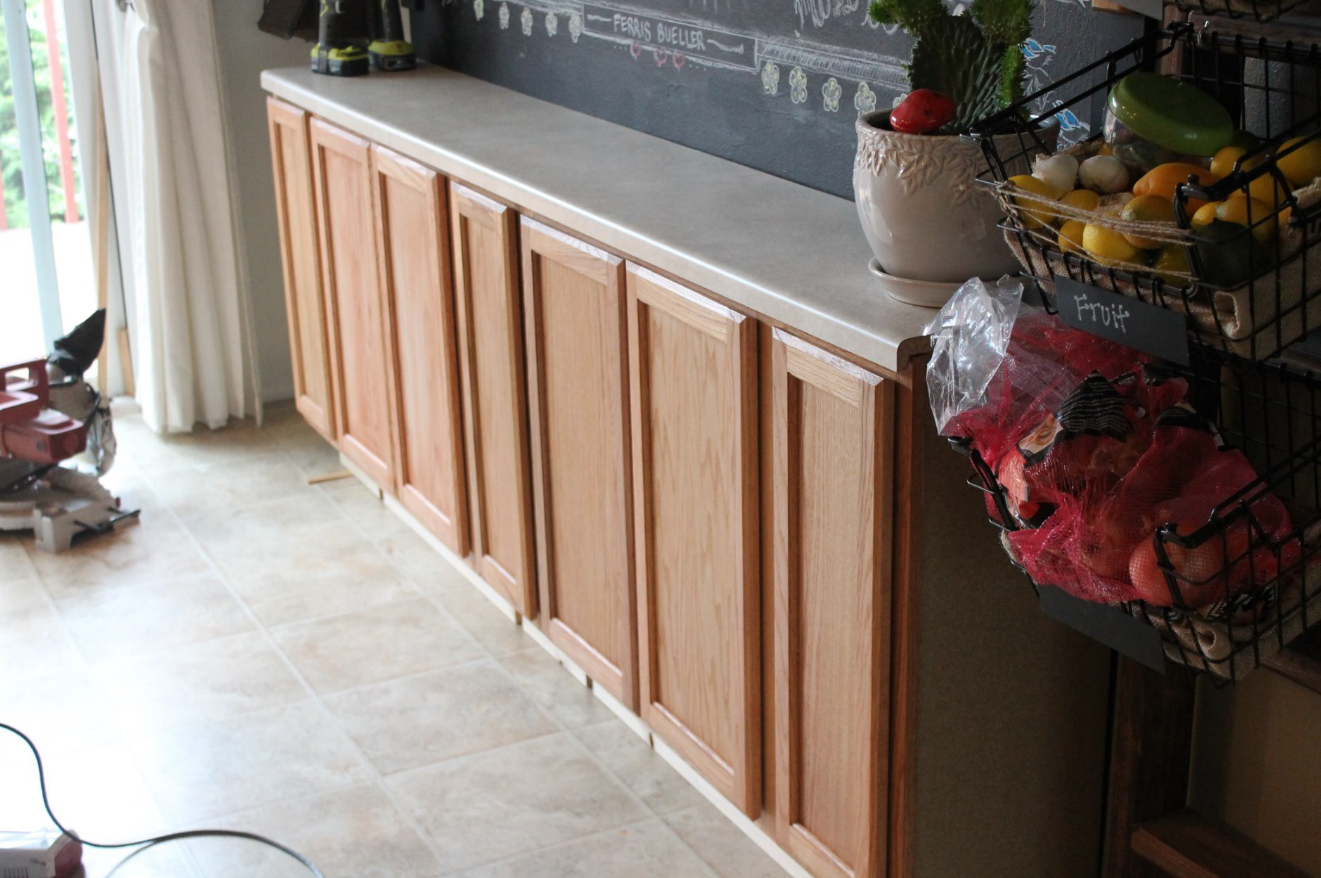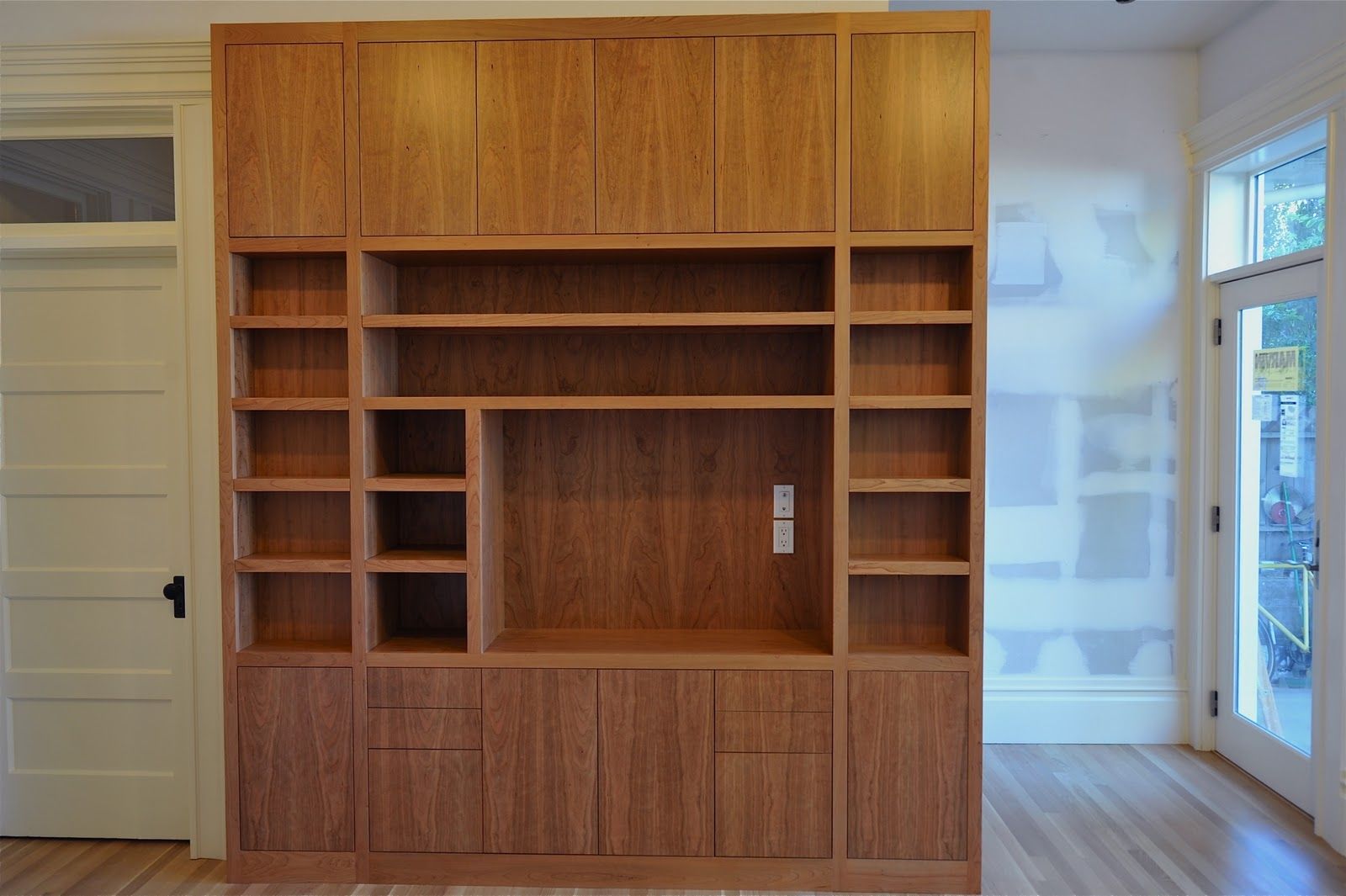Deep Recessed Wall Cabinet Design and Functionality

Deep recessed wall cabinets are a popular choice for homeowners looking to maximize storage space in their homes. They offer a unique blend of style and functionality, but understanding their advantages and disadvantages is crucial before making a decision.
Advantages and Disadvantages of Deep Recessed Wall Cabinets
Deep recessed wall cabinets offer several advantages over standard cabinets, including increased storage capacity, a sleek and modern aesthetic, and improved functionality. However, they also come with certain disadvantages, such as limited accessibility and potential for wasted space if not designed and organized properly.
- Advantages:
- Increased Storage Capacity: The extra depth provides ample space for storing bulky items, seasonal belongings, or even creating a hidden pantry.
- Sleek and Modern Aesthetic: Deep recessed cabinets seamlessly integrate into the wall, creating a clean and uncluttered look.
- Improved Functionality: The recessed design allows for easier access to items stored in the back, compared to standard cabinets with swinging doors.
- Disadvantages:
- Limited Accessibility: Reaching items at the back of a deep cabinet can be challenging, especially for individuals with limited mobility.
- Potential for Wasted Space: If not organized properly, deep cabinets can become a storage graveyard for forgotten items.
- Increased Cost: Deep recessed cabinets typically require more materials and specialized installation, making them more expensive than standard cabinets.
Different Cabinet Configurations
Deep recessed wall cabinets can be configured in various ways to suit different rooms and purposes.
- Kitchen: Deep recessed cabinets can be used for storing appliances, cookware, or even creating a hidden pantry. For example, a deep recessed cabinet in a kitchen island can provide ample storage space for larger appliances, while a deep recessed cabinet in a wall can be used to store pots, pans, and other kitchen essentials.
- Bathroom: Deep recessed cabinets are ideal for storing towels, toiletries, and other bathroom essentials. A deep recessed cabinet in a bathroom vanity can provide ample storage space for towels, toiletries, and other bathroom essentials. For example, a deep recessed cabinet above the toilet can be used to store towels, toilet paper, and other bathroom essentials.
- Living Room: Deep recessed cabinets can be used for storing electronics, books, or other entertainment items. A deep recessed cabinet in a living room can be used to store electronics, books, and other entertainment items. For example, a deep recessed cabinet under a TV can be used to store a DVD player, gaming consoles, and other electronics.
- Bedroom: Deep recessed cabinets can be used for storing clothes, bedding, and other personal items. A deep recessed cabinet in a bedroom closet can be used to store clothes, bedding, and other personal items. For example, a deep recessed cabinet in a bedroom closet can be used to store out-of-season clothes, extra bedding, and other personal items.
Impact of Depth on Storage Capacity and Accessibility
The depth of a recessed wall cabinet significantly impacts its storage capacity and accessibility.
- Storage Capacity: Deeper cabinets offer greater storage capacity, allowing for the storage of larger and bulkier items. However, the depth also affects accessibility, making it challenging to reach items stored at the back. A general rule of thumb is to keep the depth of a recessed wall cabinet between 12-18 inches for optimal storage and accessibility. Deeper cabinets can be used for specific purposes, such as storing seasonal items or bulky appliances, but they require careful planning and organization.
- Accessibility: Accessibility is crucial for efficient storage and retrieval of items. Shallow cabinets are more accessible, but they offer less storage capacity. Deeper cabinets require organizational strategies like pull-out shelves, drawers, and tiered storage systems to maximize accessibility and prevent items from being lost in the depths.
Design Considerations for Maximizing Space Utilization
To maximize space utilization in deep recessed cabinets, consider the following design considerations:
- Pull-out Shelves: Pull-out shelves allow for easy access to items stored at the back of the cabinet, eliminating the need to reach deep inside. This is especially helpful for storing heavy or bulky items.
- Drawers: Drawers are ideal for storing smaller items and can be stacked vertically to maximize vertical space. Consider using drawers with dividers or organizers to keep items separated and organized.
- Tiered Storage Systems: Tiered storage systems utilize vertical space efficiently, allowing for the storage of multiple items on different levels. This is particularly useful for storing items of varying sizes and shapes.
- Adjustable Shelves: Adjustable shelves allow you to customize the cabinet’s interior to accommodate items of different heights. This ensures optimal space utilization and prevents wasted space.
- Lighting: Adequate lighting is essential for visibility inside deep cabinets. Consider installing LED lights or motion-activated lights for improved visibility and convenience.
Common Challenges and Solutions for Organizing Items in Deep Recessed Cabinets
Organizing items in deep recessed cabinets can be challenging, but several strategies can help:
- Labeling: Clearly labeling items and their location can help you quickly find what you need. Consider using labels with clear, concise descriptions and attaching them to the front of shelves or drawers.
- Categorization: Categorizing items by type or frequency of use can simplify organization. For example, store frequently used items in the front of the cabinet and less frequently used items at the back. You can also categorize items by season, function, or other relevant criteria.
- Vertical Storage: Utilize vertical space by stacking items on top of each other or using tiered storage systems. This maximizes space utilization and prevents items from being lost in the depths.
- Clear Containers: Using clear containers for storing items allows you to see what’s inside without having to open them. This is particularly helpful for storing small items or items that need to be kept together.
- Regular Cleaning: Regularly cleaning out deep recessed cabinets helps to prevent clutter and ensures that you can easily find what you need. Consider dedicating a specific time each month for cleaning and organizing your cabinets.
Installation and Construction of Deep Recessed Wall Cabinets

Installing deep recessed wall cabinets is a fantastic way to add storage and functionality to your space. This process involves careful planning, precision cutting, and secure mounting to ensure a durable and aesthetically pleasing result.
Framing and Drywall Preparation
Framing and drywall preparation are essential steps for a successful installation. Proper framing provides the necessary support for the cabinets, while drywall preparation ensures a smooth and even surface for mounting.
- Framing: Create a sturdy framework using 2×4 studs to support the cabinet weight. The framework should be securely attached to the wall studs or joists for maximum stability.
- Drywall: Install drywall over the framing, ensuring it is flush with the surrounding wall. This provides a smooth surface for the cabinet to be mounted against.
- Reinforcement: For heavier cabinets, consider adding additional framing or reinforcement to the wall to distribute the weight and prevent sagging.
Tools and Materials
A variety of tools and materials are necessary for installing deep recessed wall cabinets.
- Tools: A stud finder, level, tape measure, saw, drill, screwdriver, hammer, safety glasses, and work gloves are essential tools for this project.
- Materials: 2×4 lumber, drywall, screws, anchors, shims, cabinet mounting hardware, and caulk are common materials needed for installation.
Cabinet Mounting, Deep recessed wall cabinet
The method of cabinet mounting depends on the type of wall and the cabinet size.
- Stud Mounting: For lighter cabinets, mounting directly to wall studs is the most secure method. Use screws or anchors designed for the type of wall material.
- Anchor Mounting: For heavier cabinets or walls without studs, use heavy-duty anchors to secure the cabinet to the drywall. Anchors should be rated for the weight of the cabinet and the type of drywall.
- Floating Shelves: For lightweight cabinets or decorative purposes, consider using floating shelves. These shelves are mounted to the wall using hidden brackets or supports.
Cabinet Materials
The choice of cabinet materials depends on the desired aesthetic and functionality.
| Material | Properties | Suitability for Deep Recessed Applications |
|---|---|---|
| Wood | Durable, natural, can be stained or painted | Excellent, provides a traditional and elegant look |
| Metal | Strong, resistant to moisture, can be polished or powder-coated | Good, suitable for modern and industrial styles |
| Plastic | Lightweight, affordable, easy to clean | Good for smaller cabinets or utility spaces |
| Glass | Elegant, allows for visibility of contents, can be fragile | Good for display cabinets or decorative purposes |
Cabinet Alignment and Leveling
Proper cabinet alignment and leveling are crucial for a professional and functional installation.
- Leveling: Use a level to ensure the cabinet is perfectly horizontal and vertical before securing it to the wall.
- Alignment: Ensure the cabinet is aligned with the surrounding wall and other cabinets, maintaining a consistent look and feel.
- Shims: Use shims to adjust the cabinet’s position and level it precisely.
Deep Recessed Wall Cabinet Applications and Inspiration

Deep recessed wall cabinets are not just for storage; they are versatile design elements that can transform the functionality and aesthetics of any space. These cabinets offer a unique opportunity to maximize storage while adding a touch of sophistication and visual interest to your home.
Innovative Applications in Various Spaces
Deep recessed wall cabinets can be incorporated into various spaces, each with its unique application and design considerations.
- Kitchens: Deep recessed cabinets can be used to house appliances, like ovens or microwaves, creating a sleek and integrated look. They can also serve as a pantry, providing ample storage for groceries and kitchenware. Consider incorporating a pull-out pantry system for easy access to all your essentials.
- Bathrooms: Deep recessed cabinets are ideal for storing toiletries, towels, and other bathroom essentials. A deep recessed cabinet can house a washer and dryer, creating a dedicated laundry area within the bathroom.
- Living Rooms: Deep recessed cabinets can be used to create a media center, housing a television, sound system, and gaming consoles. They can also serve as a stylish and functional bookshelf or display area for collectibles and artwork.
- Home Offices: Deep recessed cabinets can be used to create a dedicated workspace with ample storage for files, office supplies, and electronics. Consider incorporating a desk with a built-in recessed cabinet for a seamless and organized workspace.
Enhancing Functionality and Aesthetics with Lighting and Design Elements
- Lighting: Incorporating lighting within the cabinet can significantly enhance its functionality and aesthetics. Recessed LED lights can illuminate the interior, making it easier to find items and creating a warm and inviting ambiance. Consider using motion sensor lights for added convenience.
- Design Elements: Deep recessed cabinets offer a canvas for creative design elements. You can use different materials like wood, metal, or glass to create unique visual effects. Consider incorporating decorative hardware, such as handles and knobs, to enhance the overall aesthetic.
Real-World Examples of Unique Designs and Storage Solutions
- Modern Kitchen with Integrated Appliances: A modern kitchen with a deep recessed cabinet that seamlessly integrates an oven and microwave, creating a sleek and streamlined look. The cabinet features a minimalist design with flush-mounted doors and handles, and the interior is illuminated by recessed LED lights.
- Contemporary Bathroom with Built-in Laundry Area: A contemporary bathroom with a deep recessed cabinet that houses a washer and dryer, creating a dedicated laundry area. The cabinet features a sleek design with a sliding door and a built-in countertop for folding laundry.
- Mid-Century Living Room with a Functional Media Center: A mid-century living room with a deep recessed cabinet that serves as a media center. The cabinet features a retro design with wood paneling and brass hardware. It houses a television, sound system, and gaming consoles, with open shelves for displaying books and collectibles.
Integrating Deep Recessed Cabinets into Different Architectural Styles
- Modern: Deep recessed cabinets with clean lines, minimalist design, and sleek finishes complement modern architecture. Consider using materials like wood veneer, metal, or glass to create a contemporary look.
- Traditional: Deep recessed cabinets with intricate details, ornate hardware, and traditional finishes blend seamlessly with traditional architecture. Consider using wood with a rich stain, decorative moldings, and classic hardware.
- Contemporary: Deep recessed cabinets with a focus on functionality and efficiency are perfect for contemporary architecture. Consider using materials like high-gloss laminates, metal accents, and hidden storage solutions.
Deep Recessed Wall Cabinet Layout Design
- Living Room Media Center: A deep recessed wall cabinet in a living room can serve as a media center, housing a television, sound system, and gaming consoles. The cabinet can be designed with open shelves for displaying books and collectibles, and closed cabinets for storing electronics and media. Consider incorporating a built-in desk with a pull-out keyboard tray for a functional workspace.
Deep recessed wall cabinets, with their ability to disappear into the wall, are the epitome of discreet storage. But sometimes, you crave a little more drama, a touch of theatrical flair. That’s where the magic of lighted curio cabinets with glass doors comes in.
These dazzling displays transform your treasures into captivating centerpieces, while the deep recessed wall cabinet silently holds the rest of your belongings, like a master of disguise.
Deep recessed wall cabinets are a fantastic way to maximize storage space, especially if you’re a fan of hiding clutter. But let’s be honest, sometimes the true stars of the kitchen are the countertops and cabinets – like a stunning combination of cream countertops with gray cabinets.
However, don’t underestimate the power of a deep recessed wall cabinet – it’s like a secret compartment for all your culinary treasures, ready to be unveiled when needed.